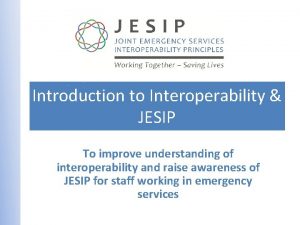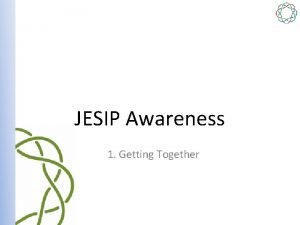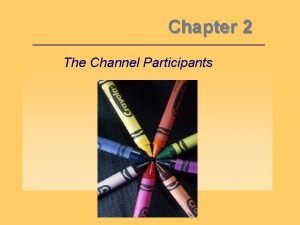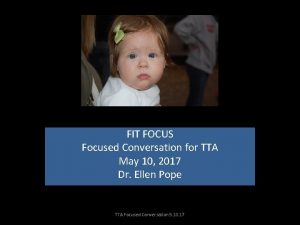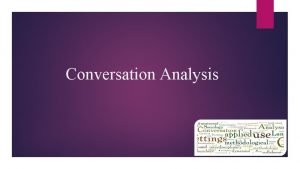Focused Conversation Facilitating Shared Awareness California SNAPEd To





- Slides: 5

Focused Conversation Facilitating Shared Awareness California SNAP-Ed To. P Facilitation Virtual Mentoring Project

Focused Conversation follows a neurological journey represented by the four steps below. To. P refers to these as ORID. Images on the cover page, this and next two pages from Dendros Group, from their Good Work Tool set. See http: //dendros. com/good-work-tools/ California SNAP-Ed To. P Facilitation Virtual Mentoring Project

Focused Conversation Focused conversation not only mirrors the way the brain functions, it helps the group journey together, providing an opportunity for the group to take all the data and establish deeper understanding and shared awareness. Do: Affirm participation. Remain neutral. Get everyone's answer on the initial (objective) question - which is always VERY easy to answer. Don't: Ask yes/no or why questions. Paraphrase what has been said. If a summary is needed, let the group do it California SNAP-Ed To. P Facilitation Virtual Mentoring Project

Focused Conversation - Sample Questions 1. What? (Objective) 3. So What? (Interpretive) What happened? What is the significance of this? What did you see or hear? What options are open to us? Who was there? What insights are beginning to emerge? What are some things we did? What kind of changes would we need to make? What do you notice about this? How well have we lived up to our expectations? What facts do we know? What new vantage point does this give us? What underlies these issues? (Remember to go around the group on the first question to cultivate participation: e. g. , What's one thing you saw or heard? ) What are we being compelled to consider? 2. Gut? (Reflective) 4. Now What? (Decisional) Where were you surprised? What are we going to do? Where were you concerned? What are our next steps? What was annoying? Who will do it? By when? What was inspiring or hopeful? What will we do differently next time? What was easy or difficult? What are we really committed to do? Where were you engaged or not engaged? How will we apply what we just learned? When where you bored? When were you excited? California SNAP-Ed To. P Facilitation Virtual Mentoring Project

Focused Conversation as a Framework Focused Conversation can be used in groups of any size. Larger groups can be divided into small teams. . . • Group conversation on a topic- help the group process the information together, as each person engages at questions designed to enable everyone to pay attention to information at each stage. • Individual application - methodically think through an issue to be more mindful about influencing factors. • Structure for a larger event - Sample framework for event as a focused conversation - 1 day conference: Morning Before break Objective Afternoon After Break Reflective Before Break Interpretive • Share peoples' real life experience about the topic. • Facilitate reactions to data, presentations or reports. • Discuss meaning, significance and implications. • Share what is known about the topic. • Determine what people like and dislike or other feelings prompted by the data. • Surface best practices. • Brainstorm possible responses. • Review the facts and data. • Have relevant presentations or conversations. • Review reports. • • Ask about relevant experiences from the past (associations). • • Evaluate and prioritize options. Determine missing pieces that need to be addressed. Discuss lessons learned. California SNAP-Ed To. P Facilitation Virtual Mentoring Project After Break Decisional • Determine what actions the group will take. (Choosing no action is a decision. ) • Facilitate individual resolve in relation to the topic. • Create group resolve. • Adopt a course of action and schedule follow up planning session, if necessary.
